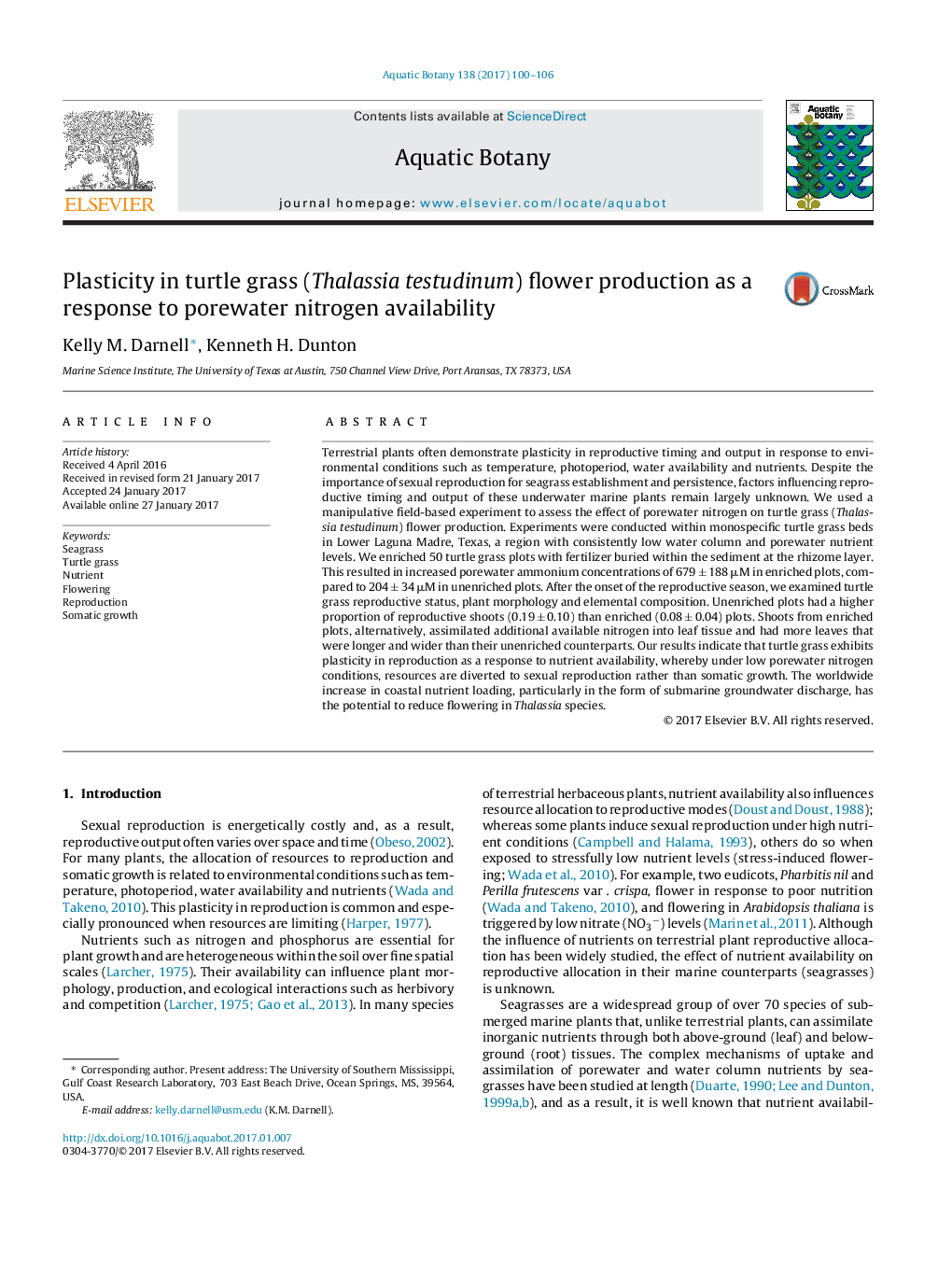| کد مقاله | کد نشریه | سال انتشار | مقاله انگلیسی | نسخه تمام متن |
|---|---|---|---|---|
| 5764064 | 1625804 | 2017 | 7 صفحه PDF | دانلود رایگان |

- We examined the effects of porewater nitrogen on turtlegrass flowering.
- Turtlegrass produced more flowers after exposure to low porewater ammonium.
- Turtlegrass enhanced somatic growth after exposure to high porewater ammonium.
- Effects may be great in areas with nutrient-rich submarine groundwater discharge.
Terrestrial plants often demonstrate plasticity in reproductive timing and output in response to environmental conditions such as temperature, photoperiod, water availability and nutrients. Despite the importance of sexual reproduction for seagrass establishment and persistence, factors influencing reproductive timing and output of these underwater marine plants remain largely unknown. We used a manipulative field-based experiment to assess the effect of porewater nitrogen on turtle grass (Thalassia testudinum) flower production. Experiments were conducted within monospecific turtle grass beds in Lower Laguna Madre, Texas, a region with consistently low water column and porewater nutrient levels. We enriched 50 turtle grass plots with fertilizer buried within the sediment at the rhizome layer. This resulted in increased porewater ammonium concentrations of 679 ± 188 μM in enriched plots, compared to 204 ± 34 μM in unenriched plots. After the onset of the reproductive season, we examined turtle grass reproductive status, plant morphology and elemental composition. Unenriched plots had a higher proportion of reproductive shoots (0.19 ± 0.10) than enriched (0.08 ± 0.04) plots. Shoots from enriched plots, alternatively, assimilated additional available nitrogen into leaf tissue and had more leaves that were longer and wider than their unenriched counterparts. Our results indicate that turtle grass exhibits plasticity in reproduction as a response to nutrient availability, whereby under low porewater nitrogen conditions, resources are diverted to sexual reproduction rather than somatic growth. The worldwide increase in coastal nutrient loading, particularly in the form of submarine groundwater discharge, has the potential to reduce flowering in Thalassia species.
Journal: Aquatic Botany - Volume 138, February 2017, Pages 100-106